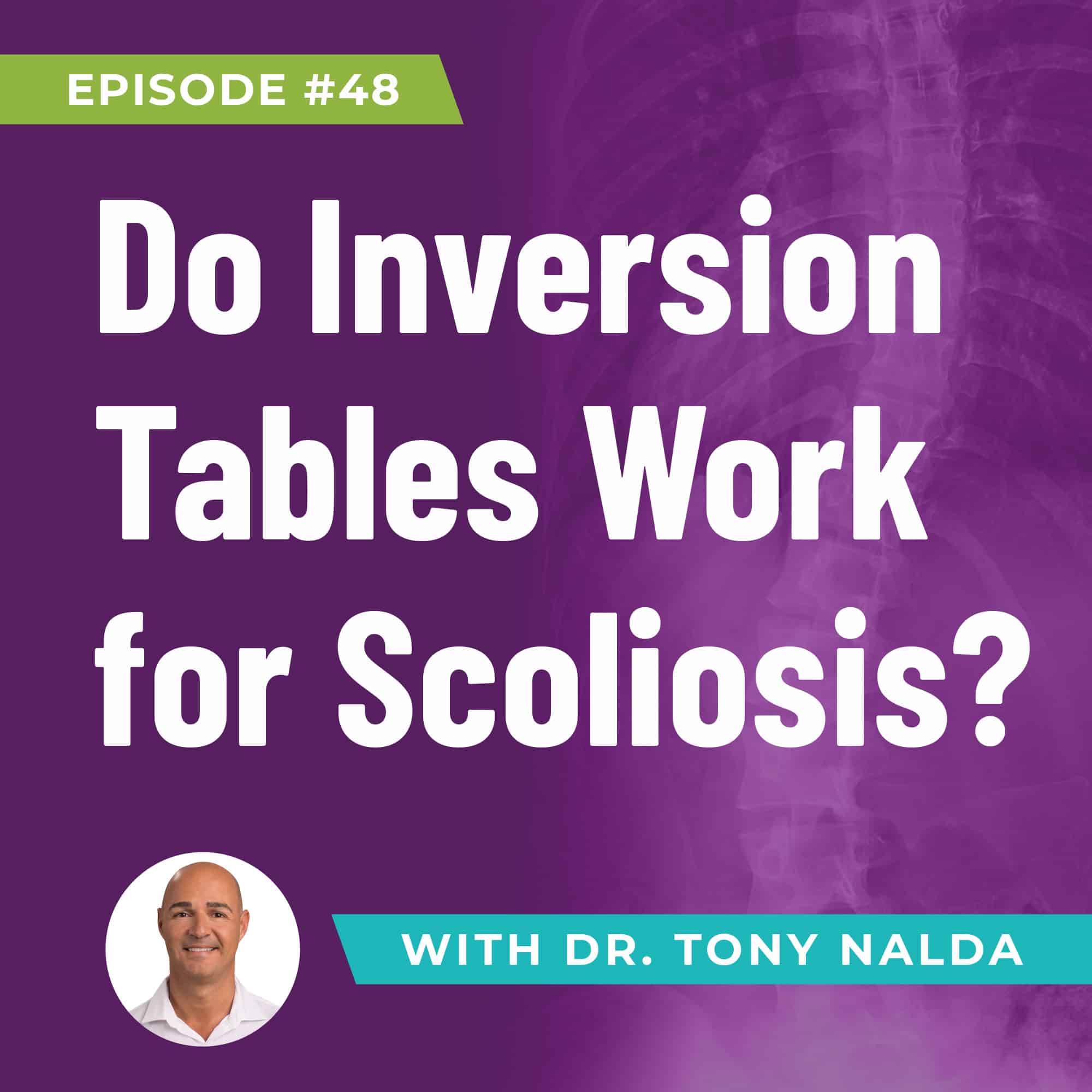Episode 48: Do Inversion Tables Work for Scoliosis?
When it comes to spinal conditions or any kind of spinal therapy or any condition to the spine like scoliosis, a lot of people think about inversion tables because inversion tables have been around for a long time, so there is this inherent thought about maybe inversion tables could help somebody with scoliosis.
What is an Inversion Table?
An inversion table is a table that tries to invert your body, normally strapping you down either by your ankles or your legs and trying to inverse the pressure of gravity on your system or your spine and using the weight of your body to help traction or decompress the spine in particular. Inversion tables can be used for lots of things, but they're mostly used to try to reduce lower back pain. Most importantly, the reason why they do that is they are inversing the gravitational forces on the spine to reduce compression, and they kind of slowly or stretch the spine out.
One of the limitations of inversion tables is that they're limited in how they apply force. Since we just invert somebody and we use gravity to decompress the spine, most of the decompression is occurring in the lumbar spine primarily. As you go up the spine because the body weighs less as you go higher up, meaning as you invert it, it creates less force in those areas. So, the maximum decompression occurs at the lower lumbar of the spine.
When we think of scoliosis, it is more than just compression, unfortunately. Scoliosis is an abnormal sideways curvature of the spine of 10 degrees or greater and then there's always a rotation. So, scoliosis by itself is not just a two-dimensional or one force causing compression of the spine. There is some compression, but it's normally a result of first the rotation and the bending. So, compression is the secondary thing that tends to happen and there can be compression of the spine and muscles, and nerves which can lead to some low back pain symptoms. That's the reason why people would think that maybe inversion table could possibly help.
To know more about Inversion Tables and how they may or may not actually reduce your scoliosis, please check Dr. Tony Nalda’s podcast.
Artlist.io 847544
Podcast: Play in new window | Download
Subscribe: RSS
Dr. Tony Nalda
DOCTOR OF CHIROPRACTIC
After receiving an undergraduate degree in psychology and his Doctorate of Chiropractic from Life University, Dr. Nalda settled in Celebration, Florida and proceeded to build one of Central Florida’s most successful chiropractic clinics.
His experience with patients suffering from scoliosis, and the confusion and frustration they faced, led him to seek a specialty in scoliosis care. In 2006 he completed his Intensive Care Certification from CLEAR Institute, a leading scoliosis educational and certification center.
About Dr. Tony Nalda
 Ready to explore scoliosis treatment? Contact Us Now
Ready to explore scoliosis treatment? Contact Us Now








